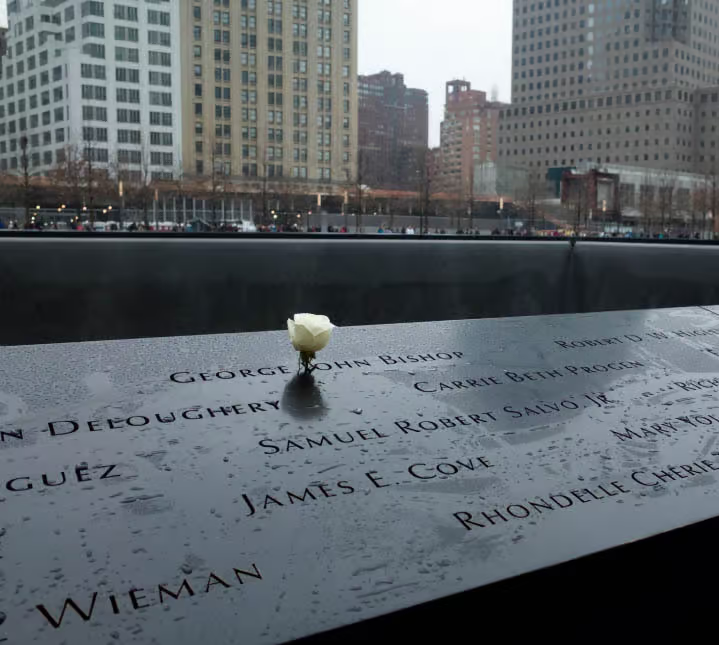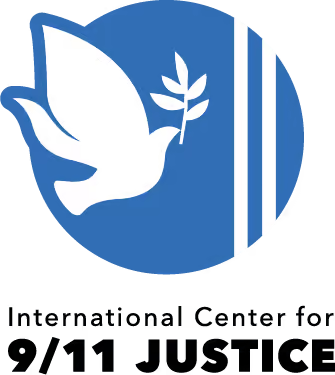A new audio message is released by a man thought to be Osama bin Laden. In the message, which lasts about nine minutes and is posted to a website commonly used by al-Qaeda, the speaker calls on Muslims to continue the fight to liberate Palestinian land. The speaker pledges to continue fighting the Israelis and not give up “a single inch of Palestine,” adding that the Palestinian cause is the most important factor driving al-Qaeda’s war with the West. The tape’s release comes around the time of Israel’s 60th anniversary, when US President Bush is in Israel to attend the anniversary celebrations [BBC, 5/16/2008]
May 18, 2008: Bin Laden Possibly Releases Message about Israel and Gaza
A man thought to be Osama bin Laden releases an audio tape calling on Muslim fighters to help end the Israeli blockade of Gaza. In the tape, released by posting on the Internet, the speaker says it is the duty of every Muslim to fight the “oppressive closure.” The tape is released two days after the previous one (see May 16, 2008), on the day US President Bush ends a visit to the Middle East. [Sky News, 5/18/2008]
June 4, 2008: Al-Zawahiri Releases New Audio Tape Marking Anniversary of Six-Day War
Al-Qaeda second in command Ayman al-Zawahiri releases a new audio tape criticizing his native Egypt for not opening up its border to Palestinians. The 11-minute tape is released by posting to the Internet to mark the 41st anniversary of the Six-Day War between Israel and some of its Arab neighbors. “The brother from Gaza is refused entry [by Egypt], while an Israeli tourist is allowed to enter without a visa,” says al-Zawahiri, calling for an end to Israel’s economic blockade of the Gaza Strip. He also terms Egyptian President Hosni Mubarak and his troops “criminal traitors” for perpetuating the siege of Gaza. “Salvation of the Muslim nation is through the march of its sons on the path of jihad,” he adds. [Al Jazeera, 5/5/2008]
June 6, 2008: Reporter: Afghanistan, Pakistani Terrorism ‘Far More Serious Threat[s] for US National Security than Iraq’
In a panel discussion hosted by PBS’s Bill Moyers, journalist Jonathan Landay, discussing the US war in Afghanistan, notes that the vast majority of media coverage has been granted to the Iraq occupation. The war in Afghanistan is largely forgotten by the media, or merely rolled into Iraq coverage. Landay notes that Afghanistan is “a far more serious threat for US national security than Iraq is.” Similarly, the media rarely reports on the dire terrorist threats centered in the tribal areas of Pakistan. “[T]his is a black hole virtually which the United States is deeply involved in that we don’t see a lot of meaningful, I mean, in-depth coverage of,” he says. [PBS, 6/6/2008]
June 22, 2008: Article: Pakistani Border Forces Helping Taliban Attack US Troops in Afghanistan
The British newspaper The Observer reports that the Frontier Corps, a Pakistani government paramilitary force operating in Pakistan’s tribal regions near the border with Afghanistan, sometimes join in attacks on US-led forces in Afghanistan. The article alleges there are “box loads” of after-action reports compiled after armed clashes near the border, detailing the Frontier Corps working with the Taliban and other allied militants. Some attacks are launched so close to Frontier Corps outposts that Pakistani cooperation with the Taliban is assumed. There has been a dramatic increase in cross-border incidents compared to the same time the year before. An anonymous US official says: “The United States and NATO have substantial information on this problem. It’s taking place at a variety of places along the border with the Frontier Corps giving direct and indirect assistance. I’m not saying it is everyone. There are some parts that have been quite helpful… but if you have seen the after-action reports of their involvement in attacks along the Afghan border you would appreciate the problem.” The US government continues to downplay such incidents, worried about its relationship with the Pakistani government. A NATO spokesman says: “The real concern is that the extremists in Pakistan are getting safe havens to rest, recuperate and retool in Pakistan and come across the border. The concerns have been conveyed to the Pakistan authorities.” [Observer, 6/22/2008]
Late June 2008: US Intelligence Allegedly Discovers ISI and Taliban Faction Are Planning Spectacular Bombing in Afghanistan
US intelligence allegedly discovers that the ISI, Pakistan’s intelligence agency, and a faction of the Taliban are planning a spectacular bombing somewhere in Afghanistan. US intelligence is intercepting Pakistani government communications in an attempt to find out if the Pakistani government is still supporting militants fights US soldiers in Afghanistan. Communications intercepts already revealed an active link between the Pakistani government and the Haqqani network, a semi-autonomous branch of the Taliban headed by Jalaluddin Haqqani (see May 2008). According to a later book by New York Times reporter David Sanger, new intercepts at this time show that the ISI is working to carry out a spectacular bombing in Afghanistan. But apparently, the exact target is not known. Two weeks later, the Indian Embassy in Kabul will be bombed (see July 7, 2008). Afterwards, the US will accuse the ISI and the Haqqani network of plotting the bombing, mostly based on these intercepts from before the bombing (see July 28, 2008 and August 1, 2008). [London Times, 2/17/2009]
June 28, 2008: Justice Department’s Investigation of CIA’s Destruction of Torture Videotapes Is Proceeding Slowly
Newsweek reports that the Justice Department’s criminal investigation into the CIA’s destruction of video of the torture of al-Qaeda leaders Abu Zubaida and Abd al-Rahim al-Nashiri is continuing, but proceeding slowly. Federal prosecutor John Durham has recently filed a federal court affidavit that states he is examining whether anyone “obstructed justice, made false statements, or acted in contempt of court or Congress in connection with the destruction of the videotapes.” He is specifically attempting to determine if the destruction violated any judge’s order. But progress is slow, and the investigation is likely to take six months or more, which means any criminal charges will probably come after the November 2008 presidential elections. Two sources close to former intelligence officials who are potential key witnesses in the case say these officials have not been summoned to give grand jury testimony. One of them has not even been questioned by the FBI yet. [Newsweek, 6/28/2008] Attorney General Michael Mukasey appointed Durham to head the investigation in January 2008 (see January 2, 2008).
June 30, 2008: Al-Nashiri to Be Tried at Military Tribunal forColeBombing, Could Be Sentenced to Death
The Defense Department announces that it is charging al-Qaeda leader Abd al-Rahim al-Nashiri with “organizing and directing” the bombing of the USS Cole in 2000 (see October 12, 2000) and will seek the death penalty. Al-Nashiri was captured in 2002 (see Early October 2002), held and tortured in secret CIA prisons until 2006 (see (November 2002)), and then transferred to Defense Department custody at the Guantanamo prison (see September 2-3, 2006). He will be tried there in a military tribunal. Al-Nashiri told a hearing at Guantanamo in 2007 that he confessed a role in the Cole bombing, but only because he was tortured by US interrogators (see March 10-April 15, 2007). CIA Director Michael Hayden has conceded that al-Nashiri was subjected to waterboarding. [Associated Press, 6/30/2008] Khallad bin Attash, who is being held at Guantanamo with al-Nashiri and other al-Qaeda leaders, allegedly had a major role in the Cole bombing, but he is not charged. Presumably this is because he has already been charged for a role in the 9/11 attacks.
June 30, 2008: New York Times: US Policy Fight Al-Qaeda’s Pakistan Safe Haven Is ‘Drifting,’ Plagued by Mistakes and Lack of Strategy
The New York Times publishes a long front-page analysis of the policy disputes and mistakes that have bogged down US efforts to combat al-Qaeda’s safe haven in Pakistan’s tribal region. The article reveals that the US effort has often been “undermined by bitter disagreements within the Bush administration and within the CIA, including about whether American commandos should launch ground raids inside the tribal areas.… [B]y most accounts, the administration failed to develop a comprehensive plan to address the militant problem there, and never resolved the disagreements between warring agencies that undermined efforts to fashion any coherent strategy.” Richard Armitage, deputy secretary of state for President Bush’s first term and the administration’s point person for Pakistan, says, “We’re just kind of drifting.” Pakistan’s policy as led by President Pervez Musharraf has also been adrift and/or ineffective: “Western military officials say Mr. Musharraf was instead often distracted by his own political problems, and effectively allowed militants to regroup by brokering peace agreements with them.” The Times concludes, “Just as it had on the day before 9/11, al-Qaeda now has a band of terrorist camps from which to plan and train for attacks against Western targets, including the United States.” The camps are smaller than the ones used prior to 9/11, but one retired CIA officer estimates that as many as 2,000 militants train in them at any given time, up from several hundred in 2005. “Leading terrorism experts have warned that it is only a matter of time before a major terrorist attack planned in the mountains of Pakistan is carried out on American soil.” [New York Times, 6/30/2008]
July 1, 2008: Polish Intelligence Warns Taliban Plan to Attack Indian Embassy in Kabul
Polish intelligence warns India and the US that the Taliban are likely to attack the Indian embassy in Kabul, Afghanistan. The embassy will be bombed one week later, killing 54 (see July 7, 2008). The document giving the warning is entitled, “Threat Report… Threat to Indian Embassy.” It is based on information received one day earlier. It states, “Taliban are planning to carry out an attack on the Indian embassy in Kabul.” It goes on to describe how a suicide bomber plans to use a stolen Afghan government car and stolen uniform to get past security. The document will be publicly leaked in 2010 as part of a massive WikiLeaks release of US documents relating to the US war in Afghanistan. [Press Trust of India, 7/27/2010] It is unclear how or where Polish intelligence got this information. US intelligence apparently learns around this time that the Taliban and ISI, Pakistan’s intelligence agency, are planning a spectacular bombing somewhere in Afghanistan (see Late June 2008). However, it appears that India acts on at least one of the warnings, because the Indian ambassador to Afghanistan will later say that India took extra security measures in the weeks before the bombings because “we were expecting trouble.” Most importantly, sand-filled blast barriers are placed around the main embassy building. That, plus the quick action of security guards, will prevent the bomber from getting closer to the building, and thus reduce the number of lives lost. [Associated Press, 7/9/2008]


